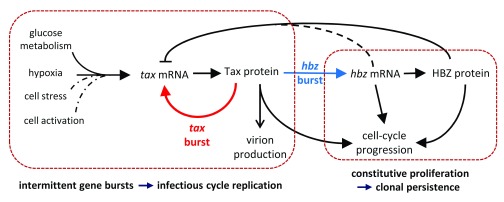Figure 6. Model of regulation of HTLV-1 transcription and replication in vivo.
Constitutive expression of hbz mRNA maintains clonal longevity by promoting cellular proliferation. Intermittent bursts of plus-strand expression, driven by bursts of tax, have three chief consequences: production of HTLV-1 virions and resulting infectious spread; accelerated cell-cycle progression; and stimulation of hbz, of which the RNA and protein both have proliferative effects. HBZ protein can also inhibit tax transcription, terminating the plus-strand burst. It is not known whether hbz mRNA also counteracts plus-strand transcription, but it is suggested by our results. The factors that regulate the frequency of plus-strand bursts include glucose metabolism and hypoxia; cell stress and cell activation may also trigger plus-strand expression. Aside from Tax, other triggers for hbz expression remain to be discovered. Dashed line represents a link indicated by results in the present study; dotted lines represent hypothetical links.

